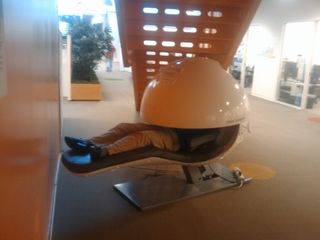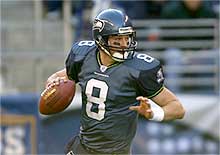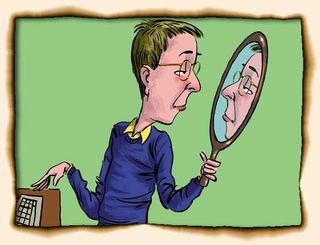Over the past several articles, Ben has written some excellent content regarding vital components to the present state of hiring in real estate. I am interrupting his series on engagement at work momentarily to share an article that has impacted me. It's an article detailing the importance of reading for those in positions of leadership. This article, by Michael Hyatt, resonated with me enough to include it in its entirety below. I hope you are moved to more deliberate reading in the same way I was. Enjoy… 
"Widely considered to be one of America’s greatest business philosophers, Jim Rohn, the late Dallas businessman and dynamic public speaker, is well known for his commitment to lifelong personal development. During his talks on the subject, he is fond of pointing out that every house that costs over $500,000 (adjusted for inflation) has a room in it called a library.
'Why do you suppose that is?' Rohn challenges his audience. 'Doesn’t that make you curious? How come every house over $500,000 has got a library? Does that tell you something? Does that educate you at all?'
There is no doubt that Rohn is right; successful people do read more. Leaders, in particular, seem to read more than almost anyone else. After all, curiosity is often cited as a common characteristic of great leaders. Lincoln was famous for reading both the Bible and Shakespeare; Franklin Roosevelt loved Kipling. 'Every great leader I’ve ever met has been a great reader,' says Rohn.
For most of us, books were where it all began.
Usually a person finds they were infected with a love of books at an early age, usually by a fellow carrier of the disease, more often than not a parent or teacher. That wonderful ability of a great book to transport our minds to new and unexplored places can have a tremendous impact on us. For the truly fortunate, a love of reading can easily lead to a love of learning—a gift that will well serve both leaders and those who simply aspire to leadership.
Too often, however, leaders allow themselves to get out of the reading habit. When it comes to learning, the brain can be likened to a muscle, and so like a muscle, it has to be regularly exercised. As we get older it will be increasingly important for us to continue exercising our brains, and there is nothing that compares to reading for keeping the brain in top shape. Additionally, as we progress through the leadership ranks within our organizations, we will need the increased knowledge and skills that only reading can provide.
The challenge to continue to grow and learn is one that each person must accept for themselves. Personal development is just that—personal. What works for one person may not work for someone else, and success may mean continually trying different strategies. But regardless of how we learn, reading will still be the primary method, and books will still be the primary tool. The key is to get yourself back to the books and you may find that you need some help getting back into the habit.
Here are three strategies:
1. Read more than one book at a time. If everything we should be reading had the same plot and pace as an episode of The Bourne Trilogy then learning about search engine optimization or social marketing would make reading to learn an easier sell. To truly grow we will need to learn to dive into subjects that can often be as dry as a west Texas summer, and we will need to learn to stay with them until the very end.
Continue with the goal of reading so many chapters or 'x' number of pages in mind, but if you find your mind wandering before reaching your reading goal for the night, try dropping one book and picking up another. Continue reading to your goal, but allow your mind more choice in the subject of the moment. If you find the new material interesting, keep working through it, but if not drop that book too and either go back to your original book or try out a third title.
2. Try reading in more than one place. On a similar theme to reading more than one book at a time, have books set aside to read when you are at different locations. A book stored in your briefcase, backpack, or carrying case can insure you are always able to take advantage of down time in your schedule. A doctor who is running late can add a chapter to your reservoir of knowledge.
Similarly, a book stashed in your desk at work can be a great way to recharge your batteries. Consider reading for ten or fifteen minutes at least once during your work day. You may find that not only do you reach your goal of using reading to learn, you are also more excited about the work you were doing prior to your brain break.
3. Make use of the latest technologies. By now everyone is aware of the benefits of using an e-Book reader similar to Amazon’s Kindle or Apple’s iPad. These technologies make carrying a number of books with you at all times much more convenient, and anything that makes reading easier is always a good idea.
Books on tape were a wonderful invention, allowing what Zig Ziglar called Automobile University. Today books can be recorded as MP3 files, greatly reducing the size of the files and allowing you to keep a number of audio books on your iPod at any one time. Your phone can be another great place to keep an audio book, and you can be sure you will usually have it, and so them, with you most of the time.
No matter what, don’t stop. Using these or other strategies to increase the number of books you read each year will help you grow both as a person and as a leader. Think of the value you could bring your organization if you could speak another language. Think of how much more valuable you will be in the marketplace if you bring a deep understanding of accounting and finance to the work you perform.
Reading can be the key to all knowledge, and having the discipline to regularly read a number of books on a wide range of subjects can be the key to success."
Editor's Note: This article was written by Dr. David Mashburn. Dave is a Clinical and Consulting Psychologist, a Partner at Tidemark, Inc. and a regular contributor to WorkPuzzle. Comments or questions are welcome. If you're an email subscriber, reply to this WorkPuzzle email. If you read the blog directly from the web, you can click the "comments" link below.













